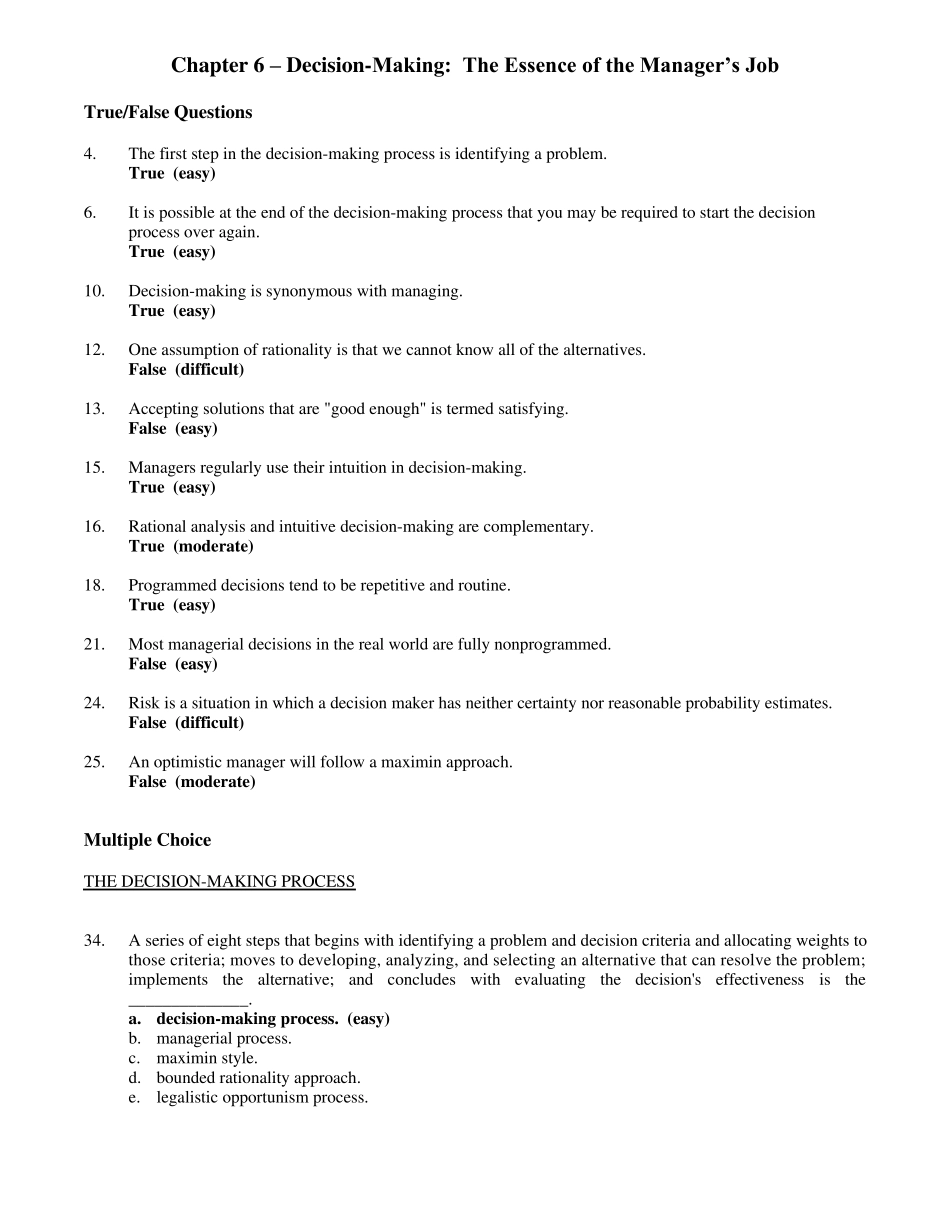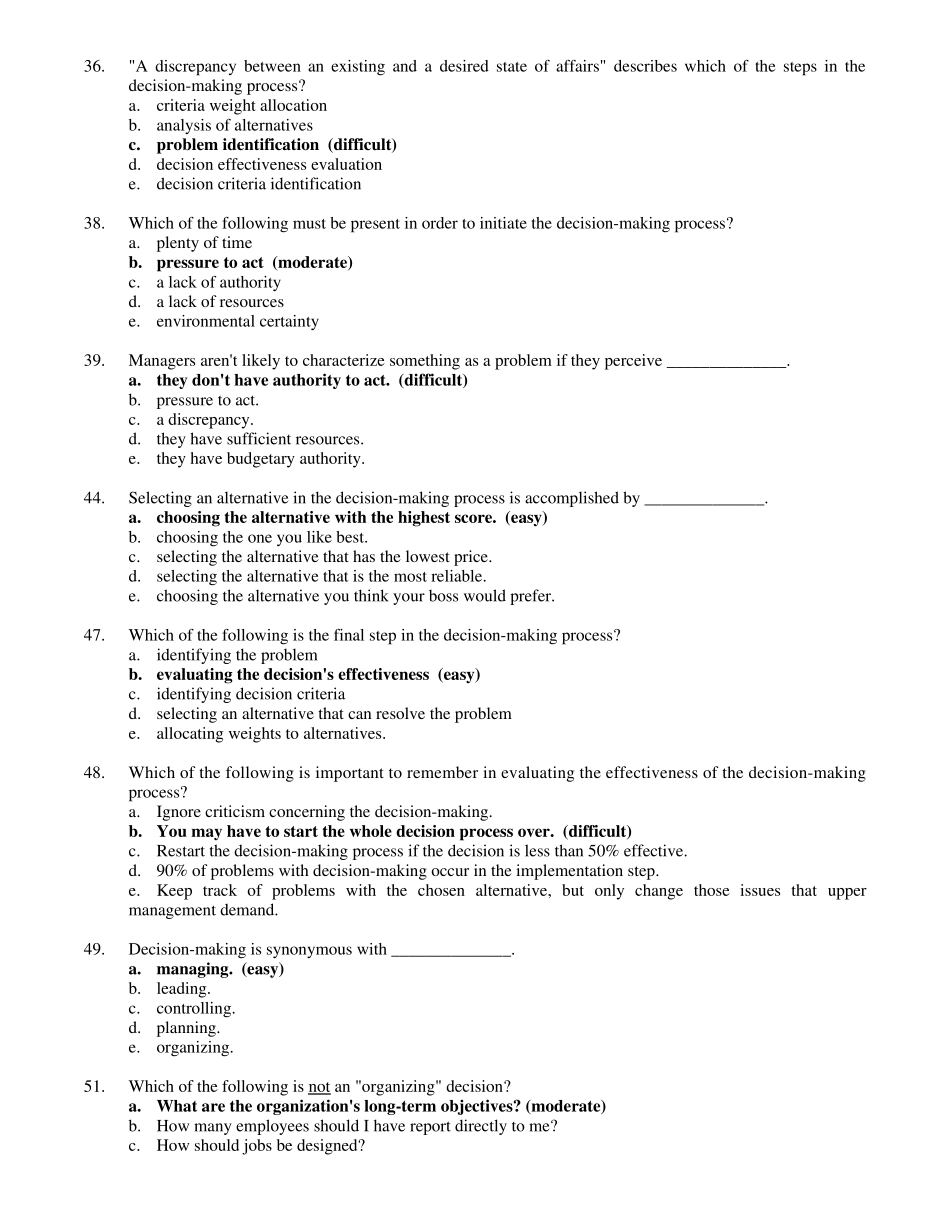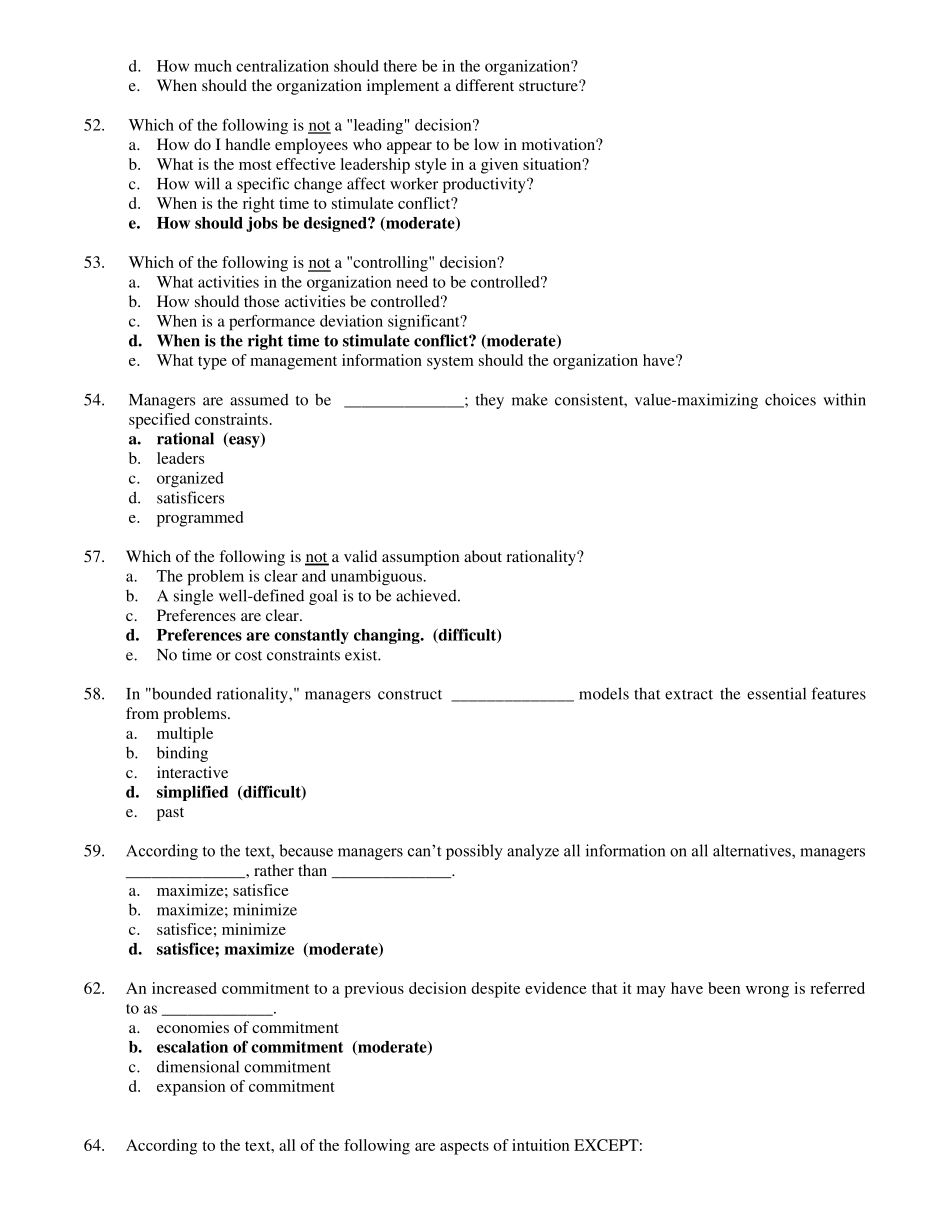Chapter 6 – Decision-Making: The Essence of the Manager’s Job True/False Questions 4. The first step in the decision-making process is identifying a problem. True (easy) 6. It is possible at the end of the decision-making process that you may be required to start the decision process over again. True (easy) 10. Decision-making is synonymous with managing. True (easy) 12. One assumption of rationality is that we cannot know all of the alternatives. False (difficult) 13. Accepting solutions that are "good enough" is termed satisfying. False (easy) 15. Managers regularly use their intuition in decision-making. True (easy) 16. Rational analysis and intuitive decision-making are complementary. True (moderate) 18. Programmed decisions tend to be repetitive and routine. True (easy) 21. Most managerial decisions in the real world are fully nonprogrammed. False (easy) 24. Risk is a situation in which a decision maker has neither certainty nor reasonable probability estimates. False (difficult) 25. An optimistic manager will follow a maximin approach. False (moderate) Multiple Choice THE DECISION-MAKING PROCESS 34. A series of eight steps that begins with identifying a problem and decision criteria and allocating weights to those criteria; moves to developing, analyzing, and selecting an alternative that can resolve the problem; implements the alternative; and concludes with evaluating the decision's effectiveness is the ______________. a. decision-making process. (easy) b. managerial process. c. maximin style. d. bounded rationality approach. e. legalistic opportunism process. 36. "A discrepancy between an existing and a desired state of affairs" describes which of the steps in the decision-making process? a. criteria we...


